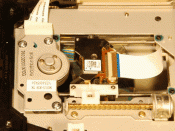Digital Story Reading As a Tool f or Vocabulary Acquisition a mong Preschool Children Maiya Bianca Aguila, Alwyn John Lim & Catherine Francia De La Salle University Manila August 2013 Vocabulary acquisition is an essential part of young children's literacy development, particularly their reading skills. It has been seen that acquiring a normal vocabulary is prerequisite for reading comprehension (Becker, 1977; Chall & Conard, 1991: Chall et al., 1990). This means that for a child to become a successful reader by the time he enters elementary he must be able to acquire the vocabulary necessary for his age. However, unlike phonics and other literacy skills, building basic vocabulary requires continuing support and there must be ongoing effort to introduce and explain new vocabulary (Hassan, 2012). Although the usual approach of presenting students with list of words to be mastered has been proven effective, research tells us that a great deal of vocabulary acquisition can take place through reading (Cho &n Choi, 2008; Elley, 1989, 1991; Vivas, 1996; Mason & Krashen, 2004; Krashen, 2004; Wang & Lee, 2007).
As early as infants, children are being exposed to printed storybooks where they encounter new words to enhance their vocabulary. Research shows that reading to babies and toddlers yields promising results. Children who were exposed to story reading at an early age demonstrate greater language comprehension and larger vocabularies (Jacobson, 2006). Early childhood educators are now looking at other possibilities as to how story reading can become more effective as well as more interesting to young children to support vocabulary acquisition even further. One of these possibilities is the using technology as a tool for story reading and, consequently, for vocabulary acquisition. Technologies such as smart phones , tablets, computers and video games are accessible and can be easily operated by young children.


